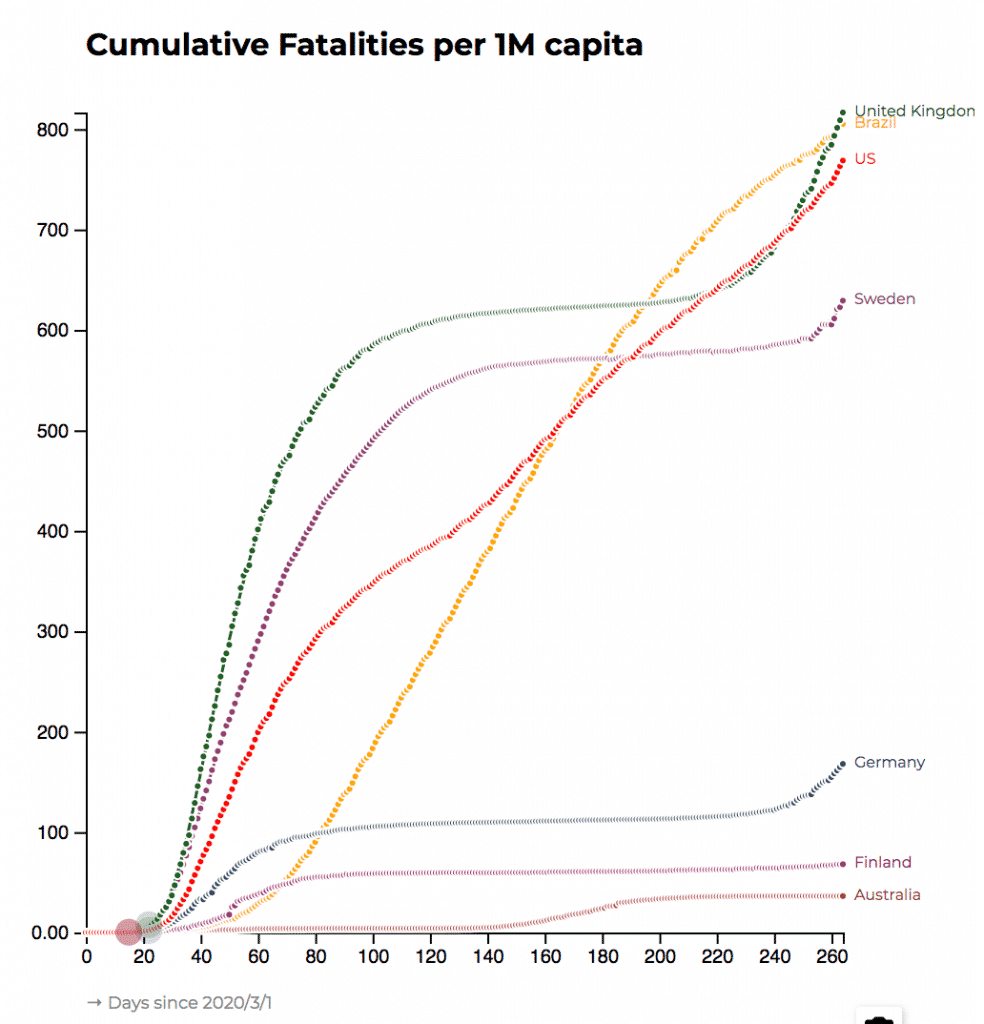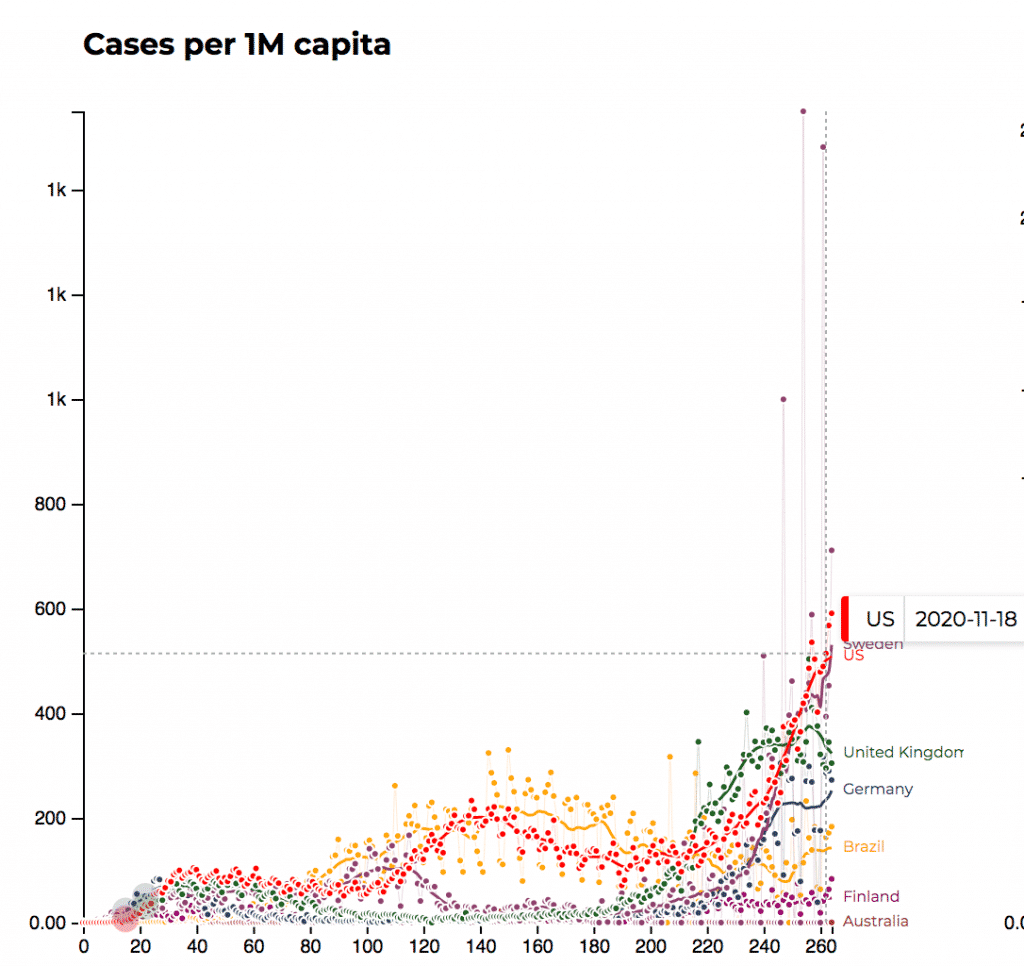For the duration of the pandemic, there has been strong pushback against coronavirus prevention measures in many countries. Even Australia came close to losing its nerve. While the pushback has relied mainly on disinformation, the reason it is so powerful is because some activities that get banned (such as outdoor exercise) probably do no harm, and the negative impacts on social distancing are absolutely real. Few will have been untouched by tragedy; whether they be big or small.
In certain places such as the UK, USA and Sweden communities appear to have largely given up on even meaningfully slowing the spread (which is increasing drastically). But even without effective social distancing mandates, people are moving around less. In sSockholm, mobility has not been much above 50% of normal levels since March.
And of course, letting the disease spread has lead to certain morbid innovations. For example, in Texas the National Guard has reportedly been brought in to help clear bodies from the morgue.
We now know that aerosol spread is the main vector, and so social distancing, mask wearing and good ventilation really are the main ways we can stop the disease absent a vaccine. And in order to implement strong social distancing policies, governments need to be willing to greatly increase welfare, to cushion citizens from the negative impacts of temporary lockdowns.
Many places are still struggling to implement these policies because they lack the social cohesion and leadership quality to provide meaningful welfare to those who need it. It won’t be until mid-2021 at the earliest that vaccinations will have a big impact and in the mean time a wide range of people, from bleach-drinking anti-vaxxers to underperforming fund managers, think that whatever price we pay for keeping economies fully open is worth it. But what is that price?
First, there is some unknown ongoing health cost associated with covid. Data out of the UK suggests as many as 1 in 10 patients suffer symptoms for 10 to 12 weeks. We still don’t know what the cost of human recovery will be, but 3 months of debilitation alone has a large cost on individuals, family and (in large numbers) society itself.
But second, many people will die. This will leave already vulnerable children without parents, the disabled without their carers and (far more commonly) families without their grandparents.

From the chart above, it would seem that every country is vulnerable to outbreaks in winter, unless they have stopped spread. But countries like Sweden (which probably undercounts its covid deaths), UK, and USA are already sitting at 600 – 800 deaths per million. That 6 to 8 in every 10,000 people dead.
But the real risk now is that deaths continue to mount over northern hemisphere winter. Deaths lag cases, and as you can see below, cases per capita are still rising strongly in the US, Sweden and Germany.

It seems unlikely that Donald Trump will do anything about US spread before he leaves office, so that leaves another 3-4 months before a new administration can do anything to help the situation in the USA.
Given that around 0.08% of the US population have already died from the disease, it’s not unreasonable to expect that over 0.1% of the US population will have died of covid by the end of the Trump administration. If that occurs, it means many people will know someone who has actually died from the disease and most will know someone who has either died or had a very severe (or long lasting) case.
Social distancing measures are not a great medicine, due to severe unwanted side effects, but it looks like in the end they will have saved around 0.1% of the population.